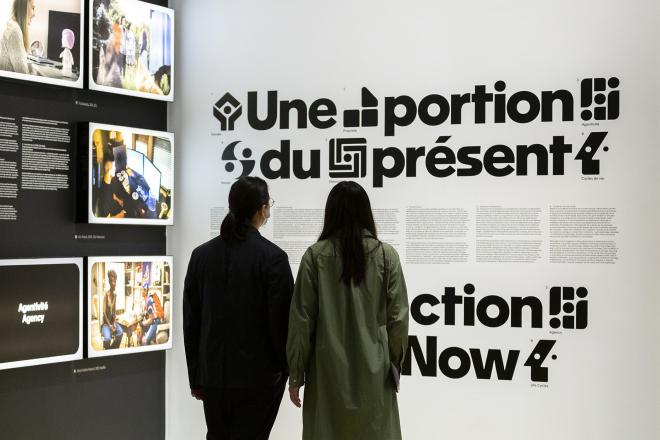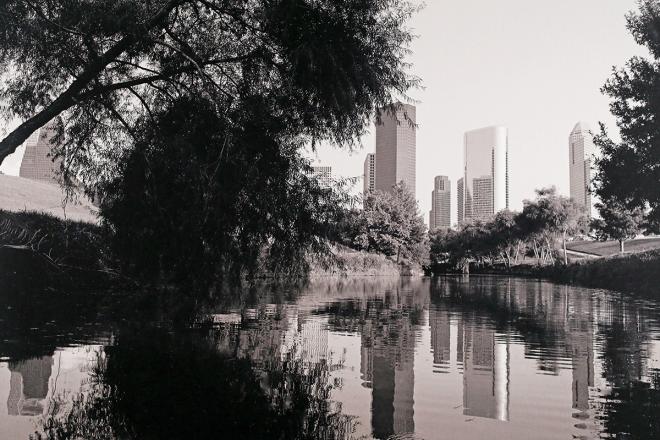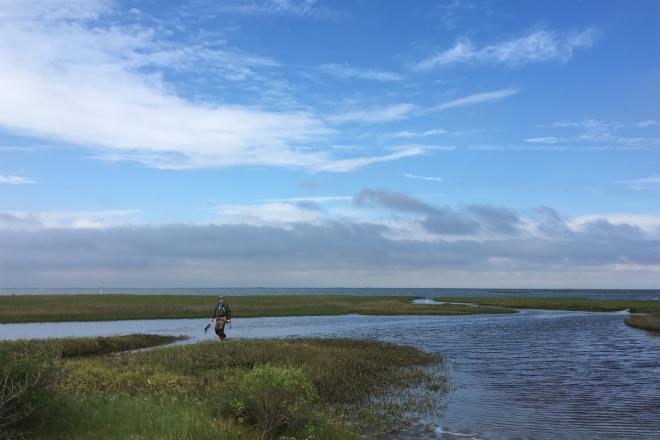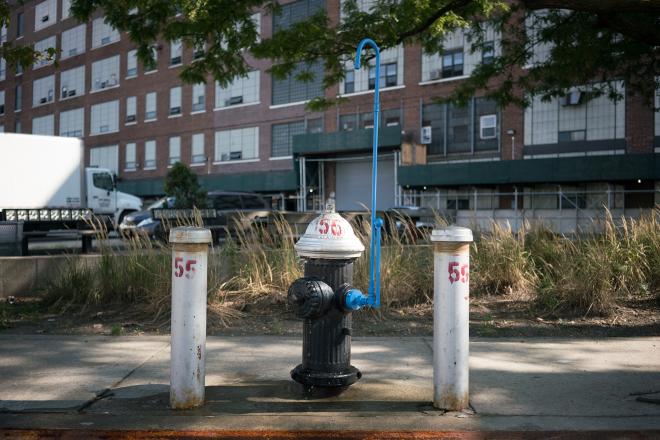
Rendering of proposal for utility easements. All images courtesy UH Community Design Resource Center.
In Fall 2012, the University of Houston Community Design Resource Center (CDRC) put on an exhibition that has become increasingly relevant in the past months. Entitled "Thick Infrastructure," the exhibit put forth bold visions for Houston’s transit centers, park-and-ride lots, drainage ditches, and utility easements.
Team members included Ruqiya Imtiaz-uddin, Alex Lara, Rose Lee, Xavier Vargas, and Susan Rogers. Rice Design Alliance provided $5,000 in funding through a 2011 Initiatives for Houston grant.
“We’re looking at how to make better use of existing spaces, how to give things more than one purpose, and how to use resources in an efficient way that adds value to our community,” says Rogers, who directs the CDRC and serves as chair of the Cite editorial committee.

Display of major electricity utility corridors.

Potential site for a vibrant trail near Highland Village.

Visitors were asked to write postcards to representatives and leave comments.
During the run of the exhibition, Houston voters approved $100 million in bond funding for Bayou Greenways, a 150-mile system of contiguous bicycle trails along the bayous. Thick Infrastructure could be seen as an extension or expansion of that grand project, a Bayou Greenways 2.0. By linking utility corridors that run north and south with the bayou trails running east and west, Houston could create a vast system of well-connected hike and bike trails.
A new bill approved by the Texas legislature and signed into law by Governor Perry on May 16 has greatly increased the chances that Houston will build trails along utility easements. The bill provides some limits to the liability of Centerpoint, which owns the easements and maintains the power lines. The question of liability had led to a similar bill stalling in the last legislative session. Senator Rodney Ellis played a key role in securing compromises and passage this time around.
At the exhibition, visitors were invited to write their own visions on postcards that were posted on walls and then sent to city council. Many cards took the logic of "Thick Infrastructure" further---calling for fine-grained steps towards a more pedestrian, bicycling, and transit-friendly city. For example, one card described a woman fainting while waiting in the sun for a bus and demanded better bus shelters. Another card suggested better sidewalks connecting the envisioned networks to “schools, churches, & homes.”
A 2013 RDA Initiatives for Houston grant was given to Rice School of Architecture Professor Gordon Wittenberg to study the specifics of trails that could be built along the corridors, including the massive right of way east of Loop 610 West previously covered by OffCite.












